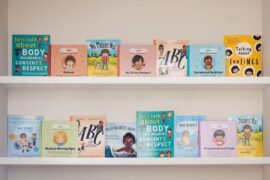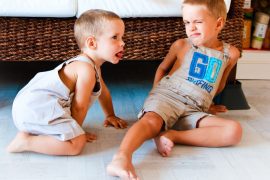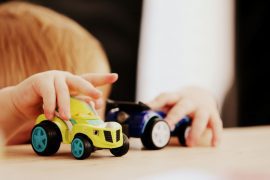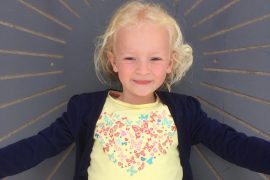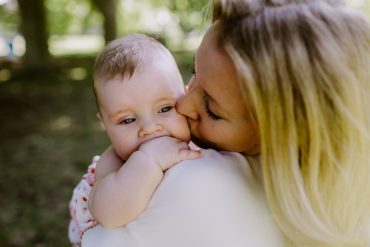Similarity Matters
Like many other areas, children prefer people who are “like them” when it comes to learning[11][12]. But what kind of similarity is relevant? It’s actually not sex (though some research would suggest it’s possible[13]), but shared preferences that guides children’s preference to learn. And this shouldn’t be too surprising as we are more likely to see someone who shares a preference as being knowledgeable in other areas which might interest us.
This is why children prefer to learn play from other children, or toy functions. Of course, we can use this to our advantage in that if we can join in on our children’s interests, we become a greater source of knowledge for them. They feel that they can turn to us more. When we think of children who distance themselves from their parents, it’s often (anecdotally) reported that they just don’t “get” them or share any interests.
So if you want your children to look to you, you have to make them want to by showing that you can share interests.
Take Home Message
Accuracy is huge to children in deciding from whom to learn – at all ages – but when it comes to passing on ideals or more negative views of others, accuracy is very hard to define. This is why we can see the transmission of these values within families and across generations. And when we factor in influences like similarity (which often occurs within a family), confidence (which is very apparent when speaking of opinions disguised as facts), and familiarity (again, very clear in a family setting), we can see how easy it is for children to pick up on ideas that are not only false, but damaging to those they will come into contact with. Racism, sexism, misogyny are all examples of ideas that are so easily spread between generations thanks to these learning heuristics we’ve evolved with.
The heuristics our children have evolved to use when learning information from others can be wonderful and help them navigate the world. However, they can also lead to the transmission of information and views that are detrimental. Hopefully, we can use this information about heuristics to fight the negative in our society.
We need teachers and friends and neighbours to know that they can become familiar, similar, and confident when they share information that contradicts the negative children may hear from those at home or from friends.
In the end, we are teaching our children a lot. It just may be in ways we don’t intend, so we must be aware of that to ensure we pass on the information we want, and not what we don’t.
References:
[1] Corriveau KH, Harris PL. Choosing your informant: weighing familiarity and past accuracy. Developmental Science 2009; 12: 426-37.
[2] Birch SAJ, Vauthier SA, Bloom P. Three- and four-year-olds spontaneously use others’ past performance to guide their learning. Cognition 2008; 107: 1018-34.
[3] Pasquini E, Corriveau KH, Koenig M, Harris PL. Preschoolers monitor the relative accuracy of informants. Developmental Psychology 2007; 43: 1216-1226.
[4] Brosseau-Liard PE, Birch SA. “I bet you know more and are nicer too!” What children infer from others’ accuracy. Developmental Science 2010; 13: 772-8.
[5] Sabbach MA, Baldwin DA. Learning words from knowledgeable versus ignorant speakers: links between preschoolers’ theory of mind and semantic development. Child Development 2001; 72: 1054-70.
[6] Birch SAJ, Akmal N, Frampton KL. Two-year-olds are vigilant of others’ nonverbal cues to credibility. Developmental Science 2009; 13: 363-9.
[7] Jaswal VK, Malone LS. Turning believers into skeptics: 3-year-olds’ sensitivity to cues to speakers credibility. Journal of Cognition and Development 2007; 8: 263-83.
[8] Brosseau-Liard PE, Cassels TG, Birch SAJ. Actions sometimes speak louder than words: Children’s use of a model’s confidence versus past accuracy. (Under Review)
[9] Tenney ER, Small JE, Kondrad RL, Jaswal VK, Spellman BA. Accuracy, confidence, and calibration: how young children and adults assess credibility. Developmental Psychology 2011; 47: 1065-77.
[10] Corriveau KH, Harris PL, Meins E, Ferneyhough C, Arnott B, Elliott L, Liddle B, Hearn A, Vittorini L, de Rosnay M. Young children’s trust in their mother’s claims: longitudinal links with attachment security in infancy. Child Development 2009; 80: 750-61.
[11] Shutts K, Kinzler KD, McKee CB, Spelke ES. Social information guides infants’ selection of foods. Journal of Cognitions and Development 2009; 10: 1-17.
[12] Fawcett CA, Markson L. Children reason about shared preferences. Developmental Psychology 2010; 46: 299-309.
[13] Shell R, Eisenberg N. The role of peers’ gender in children’s naturally occurring interest in toys. International Journal of Behavioral Development 1990; 13: 373-88.
Originally published here.
Tracy Cassels, PhD is the Director of Evolutionary Parenting, a science-based, attachment-oriented resource for families on a variety of parenting issues. In addition to her online resources, she offers one-on-one support to families around the world and is regularly asked to speak on a variety of issues from sleep to tantrums at conferences and in the media. She lives in Prince Edward County, Ontario, Canada with her husband and two children.



